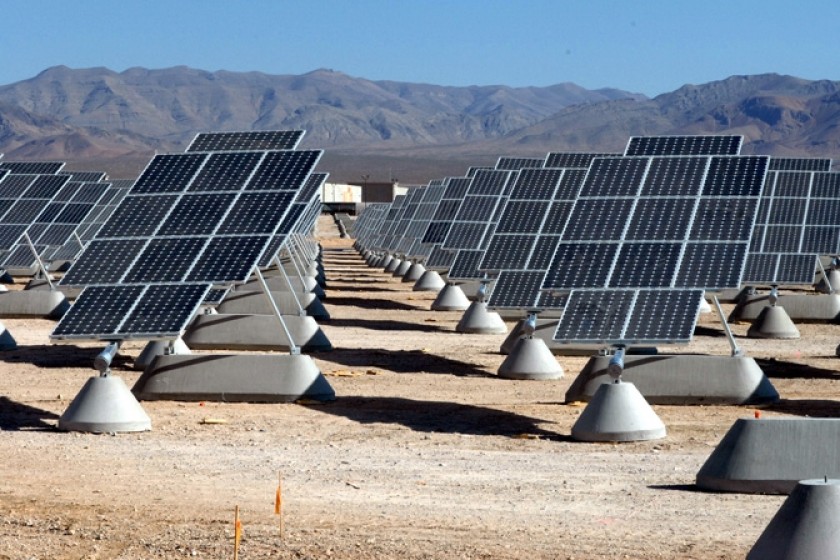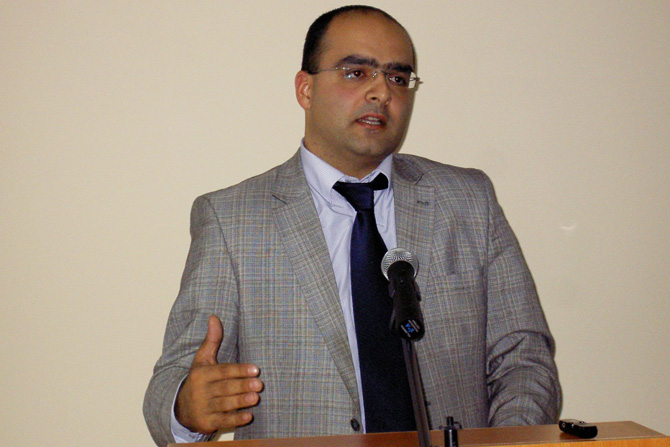
Some Experts Claim that Alternative Energy is a Luxury for Armenia
While much of the world is investing in alternative energy, Armenia lags far behind and remains reliant on traditional sources like huge hydro-electric power plants, nuclear, and thermal.
Levon Aghekyan, CEO of Energy Scientific Research Institute Ltd., told Hetq that Armenia has seen a boom in small hydro-plants in the past few years. The twenty such plants operating in 2002 have grown to 170 today. And more are being constructed.
Levon Aghekyan
Aghekyan says that such plants produced 150 million KWh in 2002 and 700 million KWh today.
“This is a great and unprecedented success. No other country has seen such an increase in 10-12 years. Armenia’s Public Services Regulatory Commission has set very correct tariffs for small hydro-plants and the private sector has taken an interest. All such plants are in private hands and have been built with private resources,” says Aghekyan.
As regards environmental issues that these plants cause, Aghekyan notes that the primary culprit is the specific hydro-plant and not the government. He says that the government has set specific flow norms that must be followed so that river outflows remain at sustainable levels. If these norms aren’t met, then the plant owners are to blame.
Wind power is also developing at a fast clip worldwide. Armenia lags in this regard. Aghekyan says that at the start of the 2000s research into wind power was carried out but the tariffs involved turned off private investors.
“There’s a problem here that must be resolved. No private investor will take the plunge if the payback period is too long. I cannot say if the tariffs are good or not since I haven’t done the research. But if a similar tariff like the one given to small hydro-plants was in place, I am convinced that the private sector would take a greater interest in wind power. I believe the tariff should be reviewed and it is at present,” says Aghekyan.
He says that the research done 10-12 years ago is now dated. The potential estimated back then no longer corresponds to reality. It has tended to decrease, according to Aghekyan who points to the necessity of new studies.
Regarding solar power, Aghekyan says it’s a dispersed energy source and cannot be regarded as a prime source.
“When they say that Armenia is a sunny country, naturally they are correct. Another question arises due to the technology. The net cost is high and the rate to ensure profitability will be higher than the rate applied to the end consumer. A solar specialist says that the sun is cheap and plentiful. It is absolutely not cheap. Sure, it’s plentiful but it’s not constant. The same holds true for wind power. They fluctuate greatly according to the season and time of day. Relying solely on these sources would be foolish. The nuclear plant, the two hydro-cascades and our thermal plants form the basis. Solar and wind power cannot serve as fundamental sources,” argues Aghekyan.
For example, in the rural areas of Germany solar technologies are widely used, but they are not system-wide for individual consumers. Subsidies are applied. The government allocates resources to develop green energy, and this has resulted in the expansion of solar power. In Armenia renewable energy isn’t subsidized and energy saving technologies are left to the whim of consumers.
“I read somewhere that all of Armenia can be powered via solar. This is nonsense. Let’s say we built a photovoltaic plant. That energy isn’t needed during the day but at night. But there is no sun at night. What must be done? Either you have to heat water and use it later, or else charge batteries that will give electricity for 24 hours. For that, one must install batteries with four times more power than the plant. This results in additional investment outlays,” says Aghekyan.
The sun provides energy for 5-6 hours in the summer and less in winter. Aghekyan says that solar, due to its inconsistency, isn’t enough to fulfill all our energy needs.
Vahe Davtyan, who heads the Clean Energy NGO, believes that the question of investing in alternative energy must be split into two parts.

Vahe Davtyan
Armenia’s only operating wind plant, located in Lori, was built ten years ago with an Iranian grant. The rate for the wind generated electricity exceeds 40 drams. It’s not a convenient rate for consumers.
According to Davtyan, the same holds true for solar, even though it’s cheaper than wind.
“Without government subsidies, alternative energy in Armenia, and in any other country, cannot develop. It’s quite expensive and requires infrastructure, which we don’t have in Armenia. That Lori wind plant cost US$5 million. There’s a question of payback,” says Davtyan.
Davtyan questions whether the government will ever subsidize such technologies, especially since the country has an electricity surplus and doesn’t know where to use it. The factories and electric transport of years ago no longer operate. Domestic consumption has decreased.
“Given these conditions, the creation of additional electricity generating systems is not reasonable purely from an economic perspective. But we face a national security issue. In this context, a state program must be initiated to create such corresponding power,” says Davtyan, adding that if we are solely guided by business interests even the nuclear plant shouldn’t be operating.
Davtyan says that Armenia’s nuclear plant produces 30% of the country’s electricity. The $30 million grant and the $270 million loan recently received from Russia is a serious burden for Armenia. Estimates say these amounts will add another 2.5 drams to the final electricity rate.
Davtyan says that he has scientific studies on the issue and has received proposals to develop the sector, but that business and economic interests prevent any such growth.
Vahe Davtyan’s photo is from his Facebook page.
 Videos
Videos Photos
Photos
Comments (8)
Write a comment